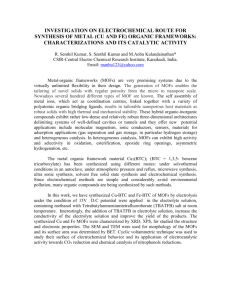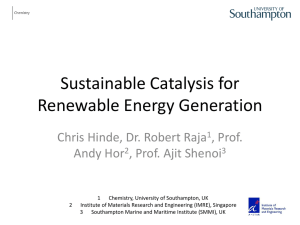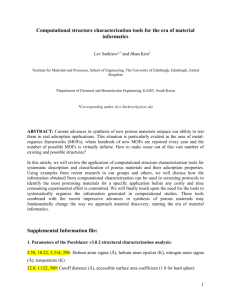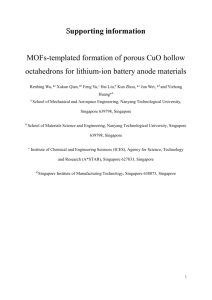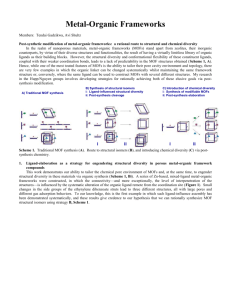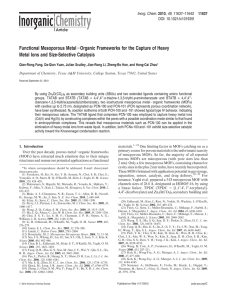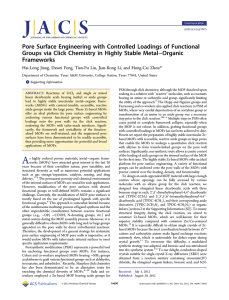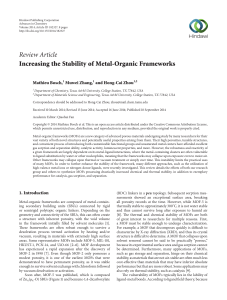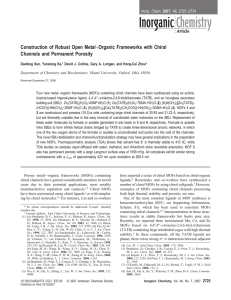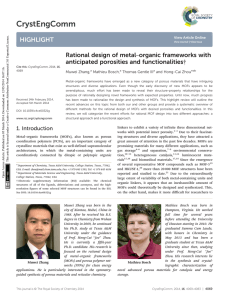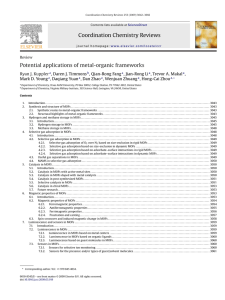Template for Electronic Submission of Organic Letters
advertisement
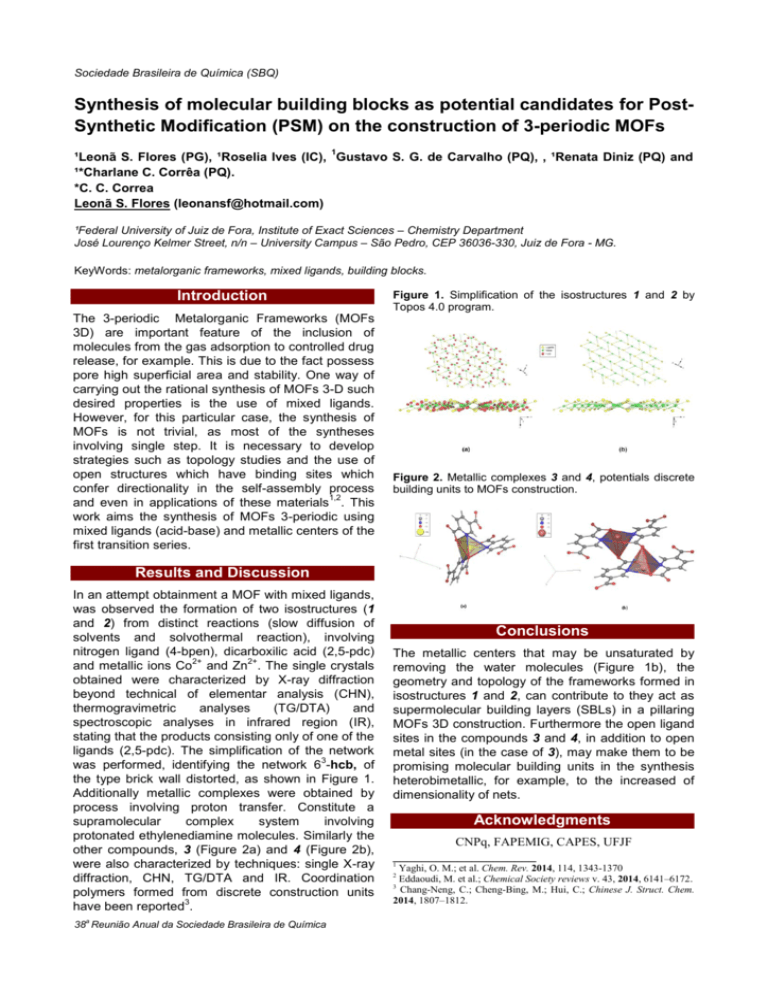
Sociedade Brasileira de Química (SBQ) Synthesis of molecular building blocks as potential candidates for PostSynthetic Modification (PSM) on the construction of 3-periodic MOFs 1 ¹Leonã S. Flores (PG), ¹Roselia Ives (IC), Gustavo S. G. de Carvalho (PQ), , ¹Renata Diniz (PQ) and ¹*Charlane C. Corrêa (PQ). *C. C. Correa Leonã S. Flores (leonansf@hotmail.com) ¹Federal University of Juiz de Fora, Institute of Exact Sciences – Chemistry Department José Lourenço Kelmer Street, n/n – University Campus – São Pedro, CEP 36036-330, Juiz de Fora - MG. KeyWords: metalorganic frameworks, mixed ligands, building blocks. Introduction The 3-periodic Metalorganic Frameworks (MOFs 3D) are important feature of the inclusion of molecules from the gas adsorption to controlled drug release, for example. This is due to the fact possess pore high superficial area and stability. One way of carrying out the rational synthesis of MOFs 3-D such desired properties is the use of mixed ligands. However, for this particular case, the synthesis of MOFs is not trivial, as most of the syntheses involving single step. It is necessary to develop strategies such as topology studies and the use of open structures which have binding sites which confer directionality in the self-assembly process 1,2 and even in applications of these materials . This work aims the synthesis of MOFs 3-periodic using mixed ligands (acid-base) and metallic centers of the first transition series. Figure 1. Simplification of the isostructures 1 and 2 by Topos 4.0 program. Figure 2. Metallic complexes 3 and 4, potentials discrete building units to MOFs construction. Results and Discussion In an attempt obtainment a MOF with mixed ligands, was observed the formation of two isostructures (1 and 2) from distinct reactions (slow diffusion of solvents and solvothermal reaction), involving nitrogen ligand (4-bpen), dicarboxilic acid (2,5-pdc) 2+ 2+ and metallic ions Co and Zn . The single crystals obtained were characterized by X-ray diffraction beyond technical of elementar analysis (CHN), thermogravimetric analyses (TG/DTA) and spectroscopic analyses in infrared region (IR), stating that the products consisting only of one of the ligands (2,5-pdc). The simplification of the network 3 was performed, identifying the network 6 -hcb, of the type brick wall distorted, as shown in Figure 1. Additionally metallic complexes were obtained by process involving proton transfer. Constitute a supramolecular complex system involving protonated ethylenediamine molecules. Similarly the other compounds, 3 (Figure 2a) and 4 (Figure 2b), were also characterized by techniques: single X-ray diffraction, CHN, TG/DTA and IR. Coordination polymers formed from discrete construction units 3 have been reported . 38a Reunião Anual da Sociedade Brasileira de Química Conclusions The metallic centers that may be unsaturated by removing the water molecules (Figure 1b), the geometry and topology of the frameworks formed in isostructures 1 and 2, can contribute to they act as supermolecular building layers (SBLs) in a pillaring MOFs 3D construction. Furthermore the open ligand sites in the compounds 3 and 4, in addition to open metal sites (in the case of 3), may make them to be promising molecular building units in the synthesis heterobimetallic, for example, to the increased of dimensionality of nets. Acknowledgments CNPq, FAPEMIG, CAPES, UFJF ____________________ 1 Yaghi, O. M.; et al. Chem. Rev. 2014, 114, 1343-1370 Eddaoudi, M. et al.; Chemical Society reviews v. 43, 2014, 6141–6172. 3 Chang-Neng, C.; Cheng-Bing, M.; Hui, C.; Chinese J. Struct. Chem. 2014, 1807–1812. 2
